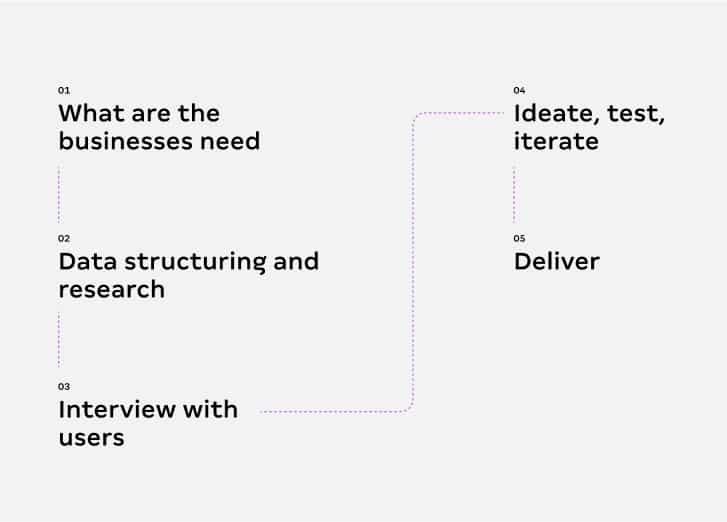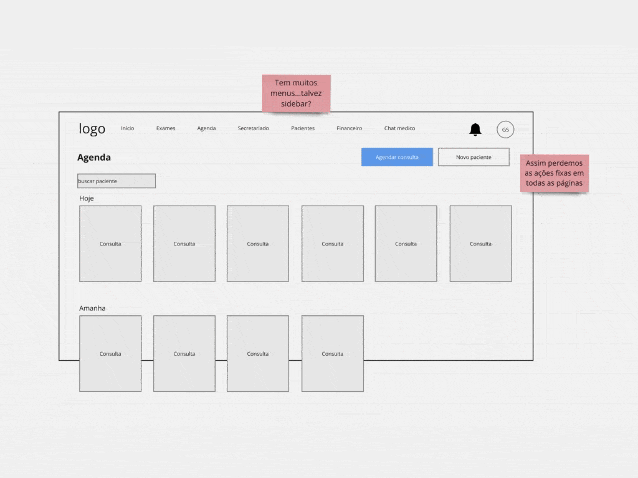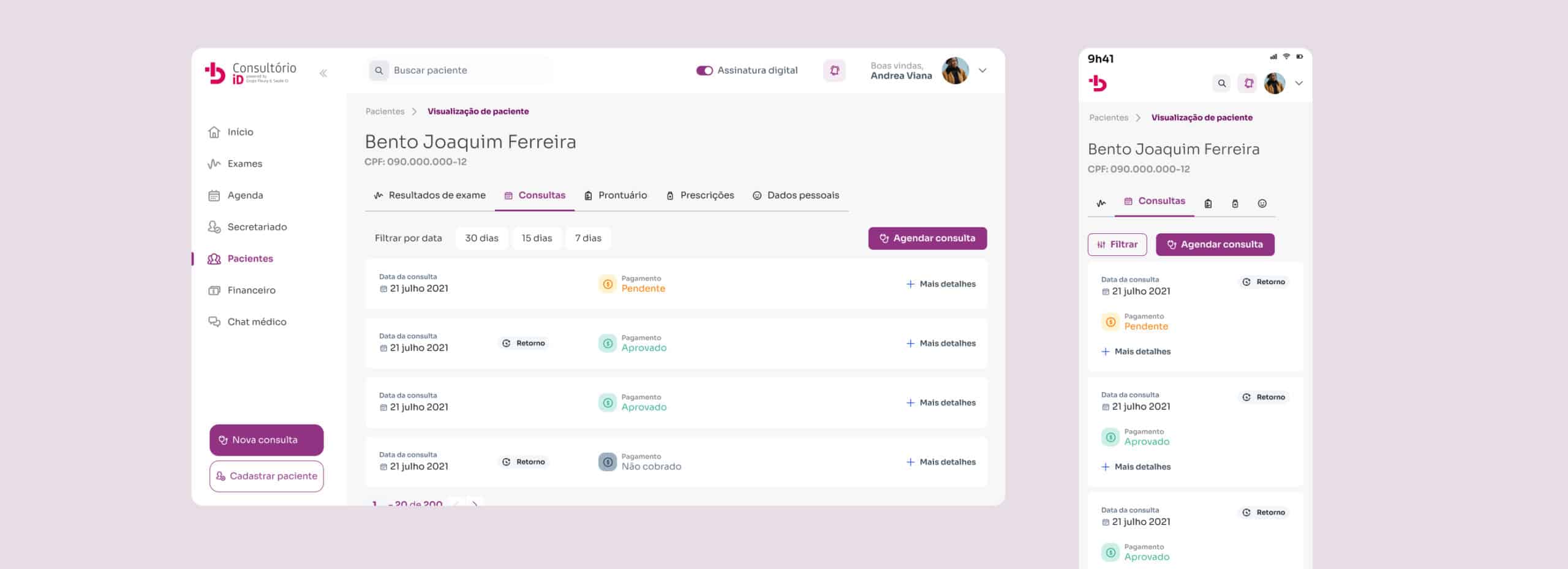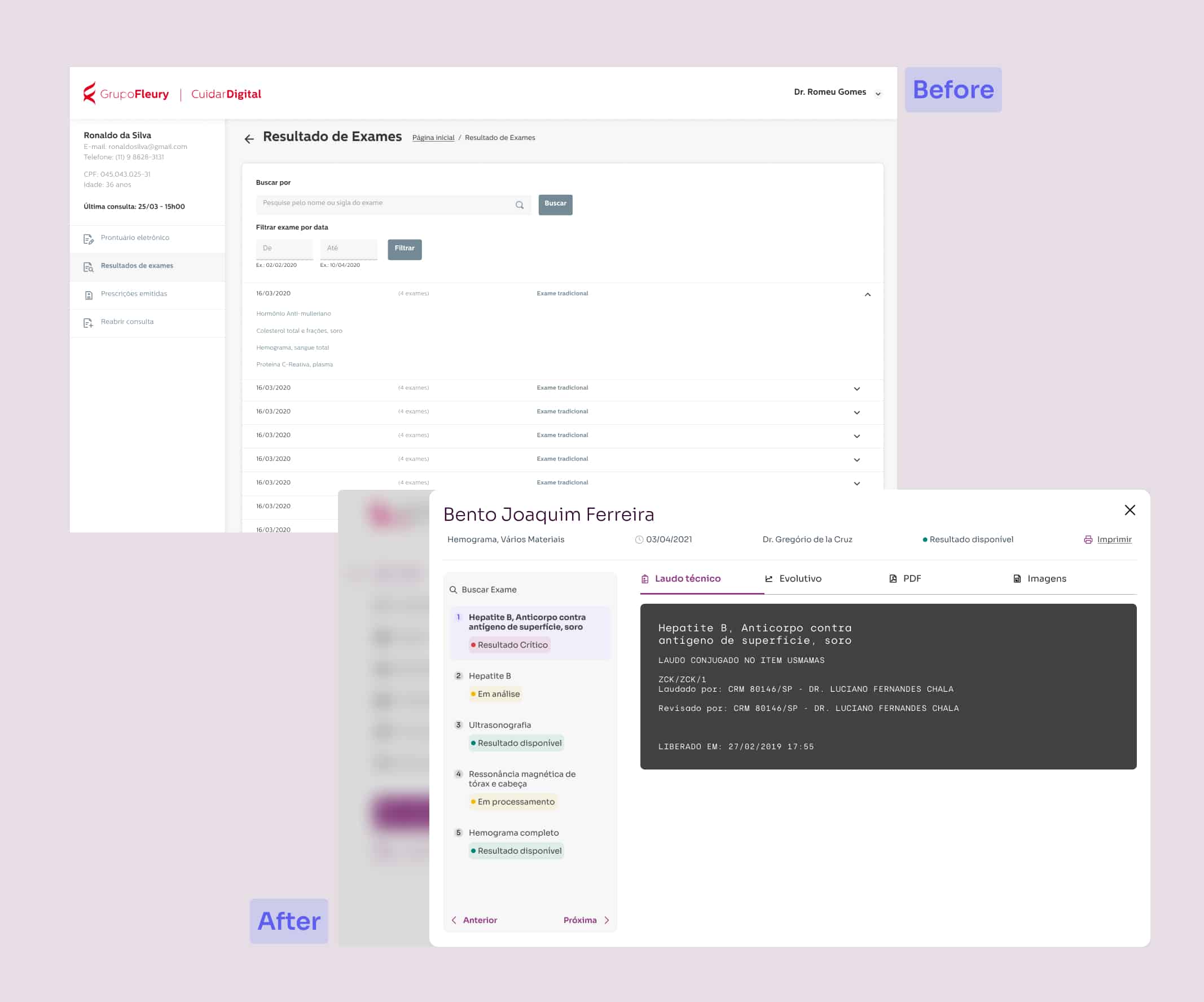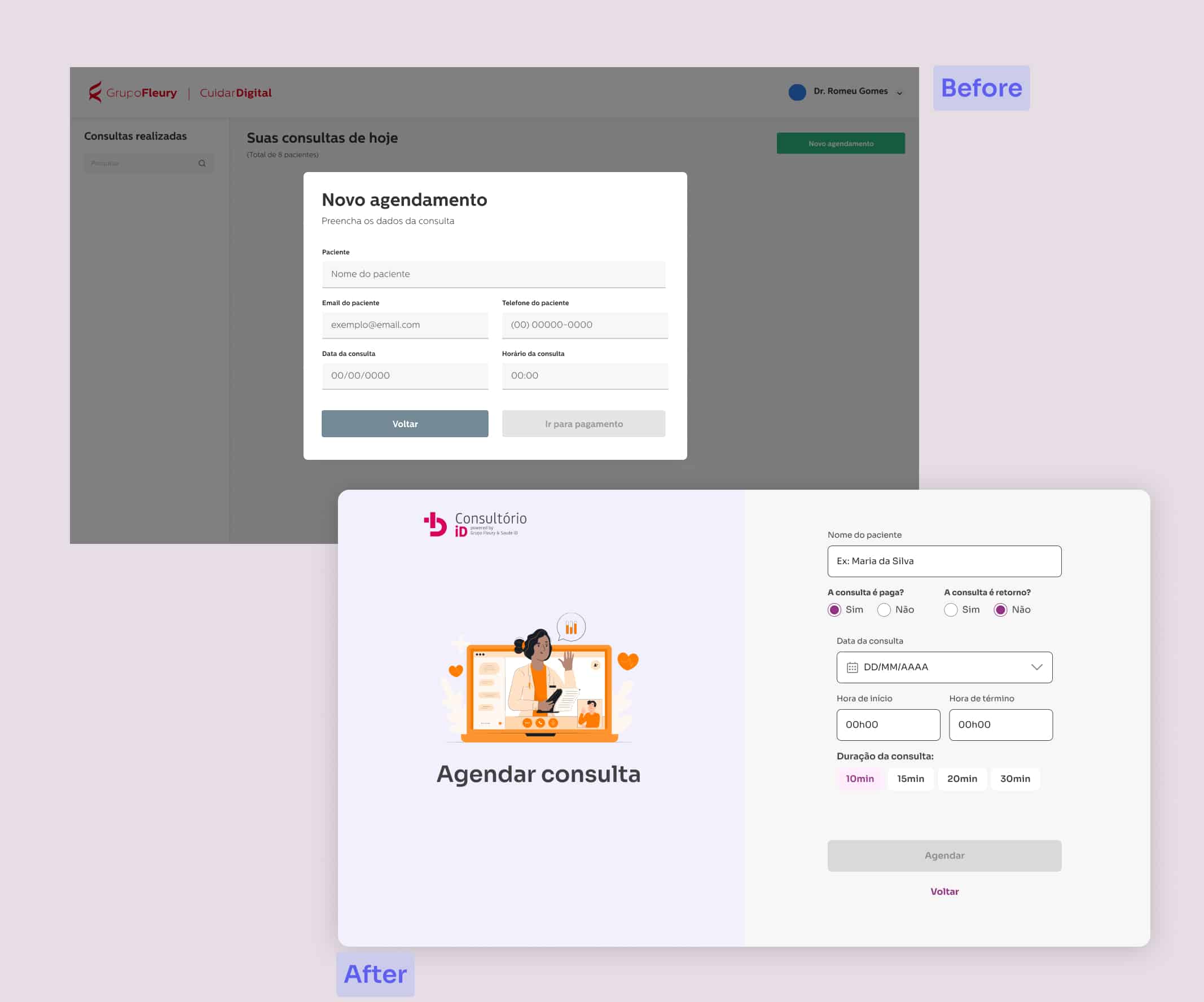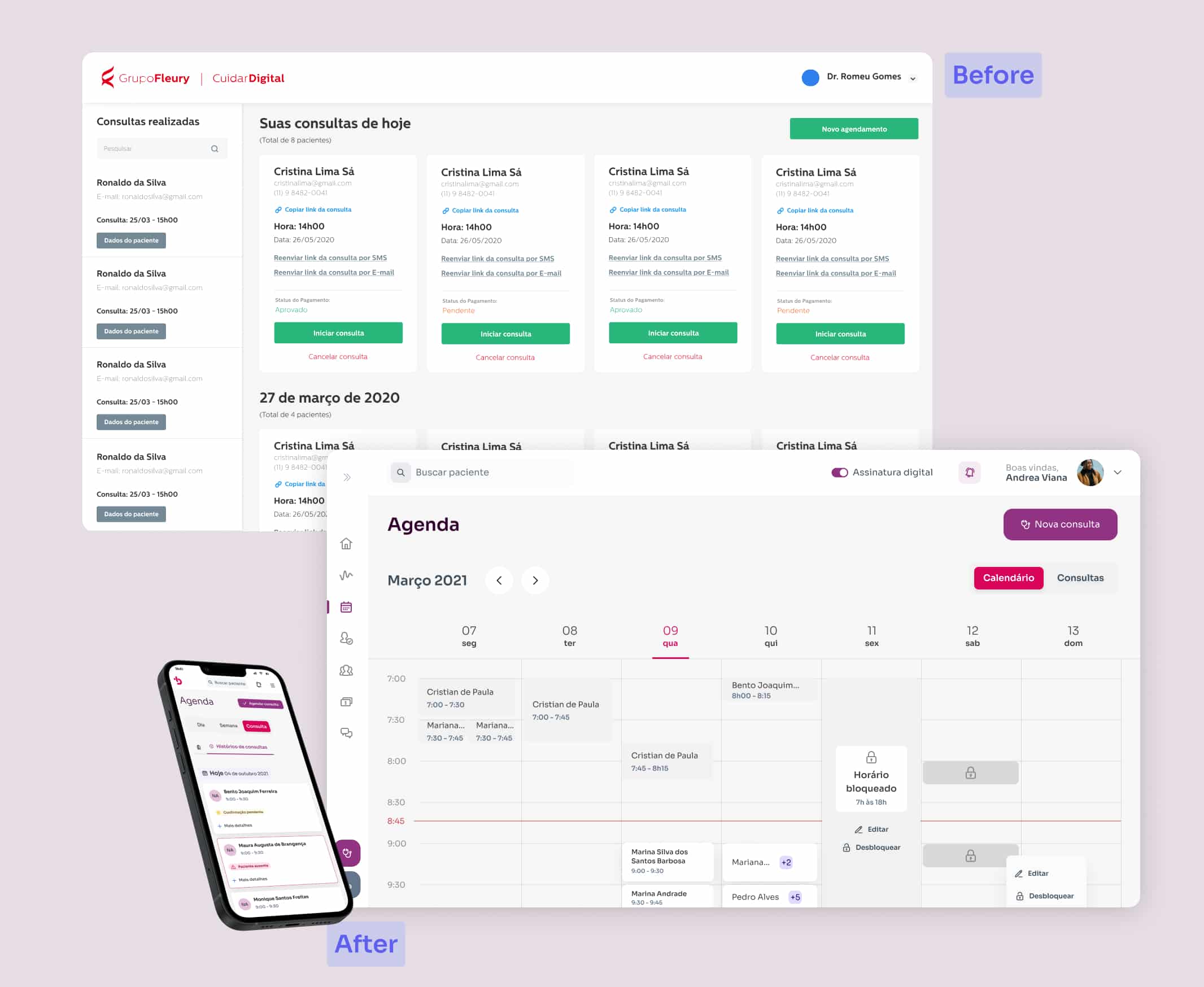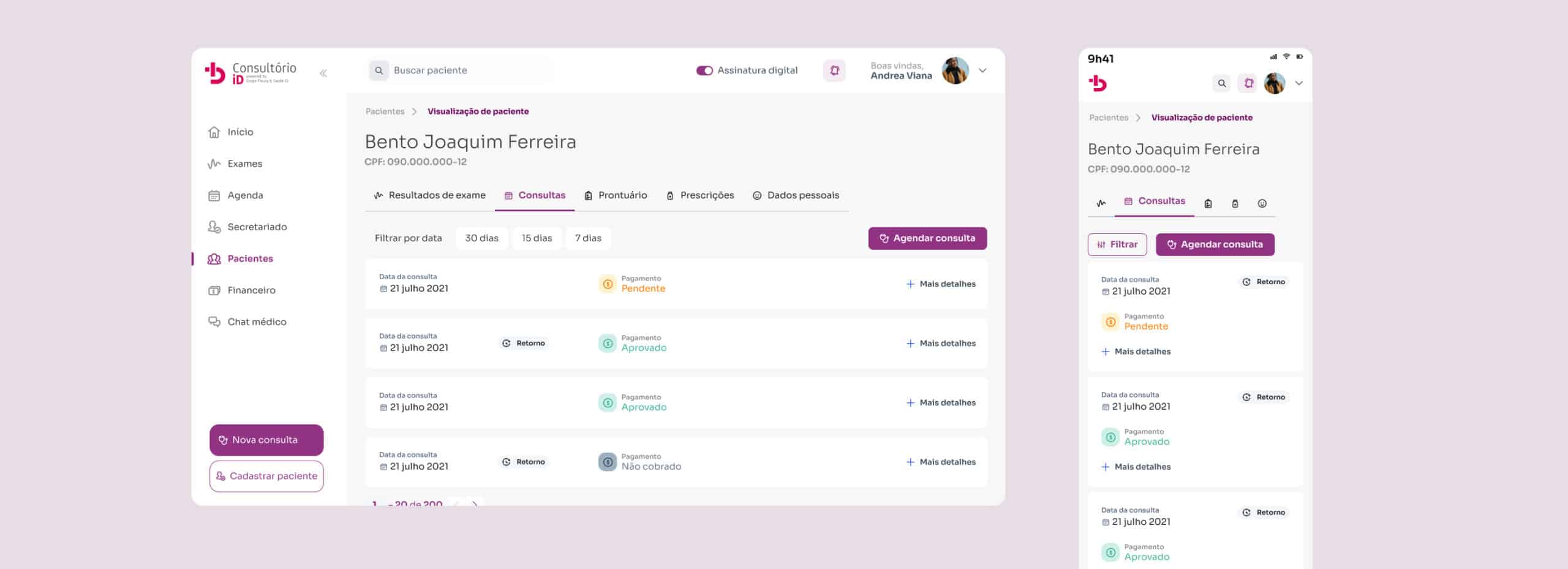Overview
Initially, our product was a profitable tool, since the in-house integration with exams results led doctors to request tests from Fleury labs, which is the core business of Fleury Group. However, as new tools began to emerge and our product did not evolve significantly with new features and usability improvements, we observed a slow decline in our main ORK, the number of appointments per day from 65 to 15 (average).
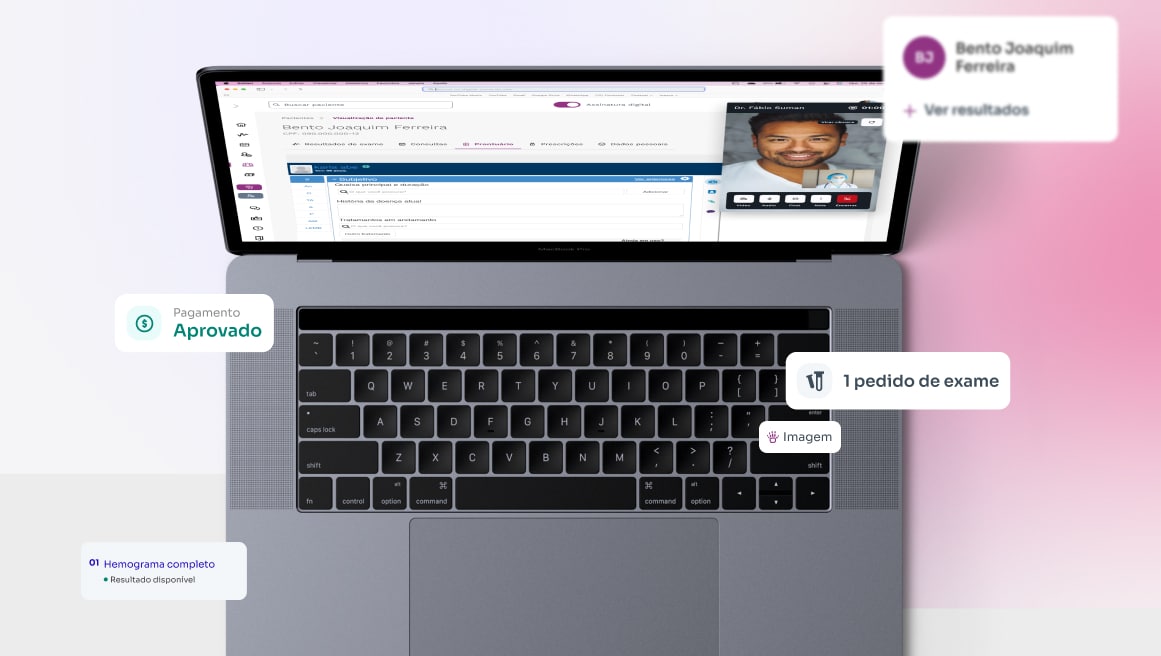 " alt="">
" alt="">


